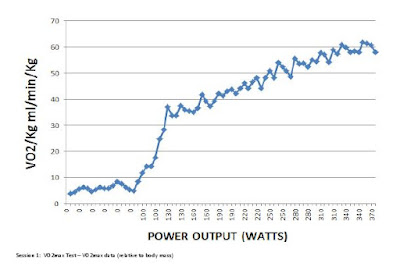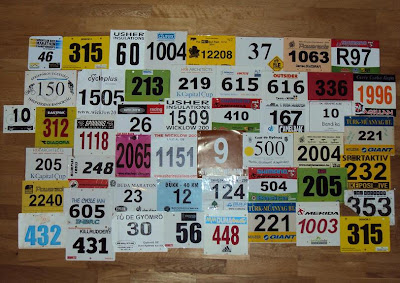I was participating as a volunteer in a research project at the UCD couple of weeks ago. The programme was very interesting and I have to say it was pretty exciting to be part of it. Once I finished the project I was very curious to see the results, after all I haven't done laboratory tests for 7 years.
All the testing is done (4 sessions) and I am after receiving the test results, here they are:
age: 29
height: 165,8 cm
weight: 51,8 kg
body fat: 7,6 %
VO2max (absolute): 3,18 l/min
VO2max (relative): 61,4 ml/min/kg
Maximum heart rate @ VO2max: 199 bpm
Power Output @ VO2max (absolute): 340 W
Power Output @ VO2max (relative): 6,56 W/kg
Maximum VE (minute ventilation): 139,6 l/min
Maximum Rf (respiratory frequency): 62 bpm
VT % VO2max (ventilatory treshold): 65%
Maximum RER (respiratory exchange ratio): 1.28
Total EE (energy expenditure during VO2max test): 112 kcal
Maximum lactic acid: 11,9 mmol/l
 |
| Graph of the VO2max test (1 session) |
 |
| Graph of the active recovery session (4th session) |
So, it's all there. I'm happy to have this kind of information in relation of my performance in the off-season. Some of the results are good, some others are not so good. The ones that I am particulary happy with are the 6,56 W/kg relative power output (highest out of 19 participants), the 199 bpm max heart rate and the 11,9 mmol/l lactic acid.
I said it before but I'd like to say it again: it was such a great opportunity to participate in the researh programme. Without it I wouldn't really have the chance to get all these useful datas indeed.
What about the final result of the research? The main question was which recovery type works the best for each individual (19 cyclists). For me the active recovery was the most effective, then the passive and the least effective was the stimulation type. But it is only for me though, it could be different for everyone.


















































